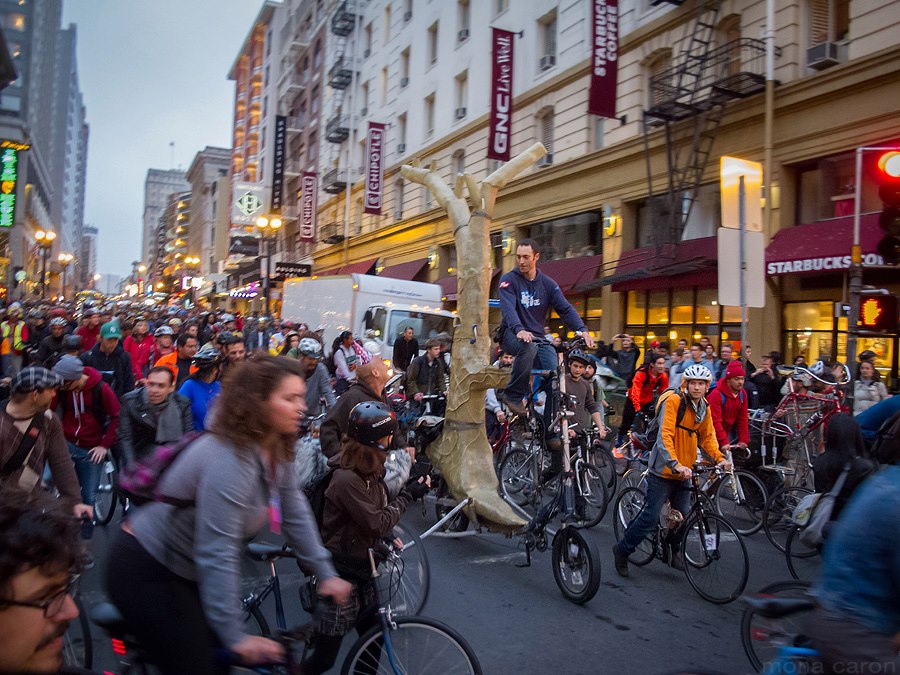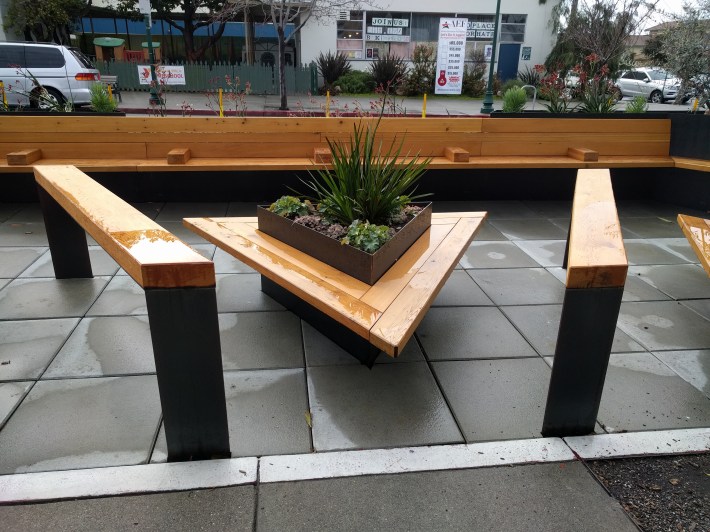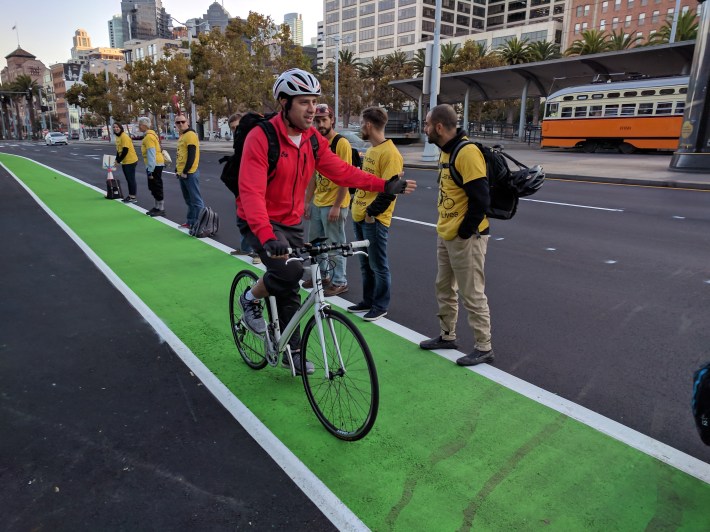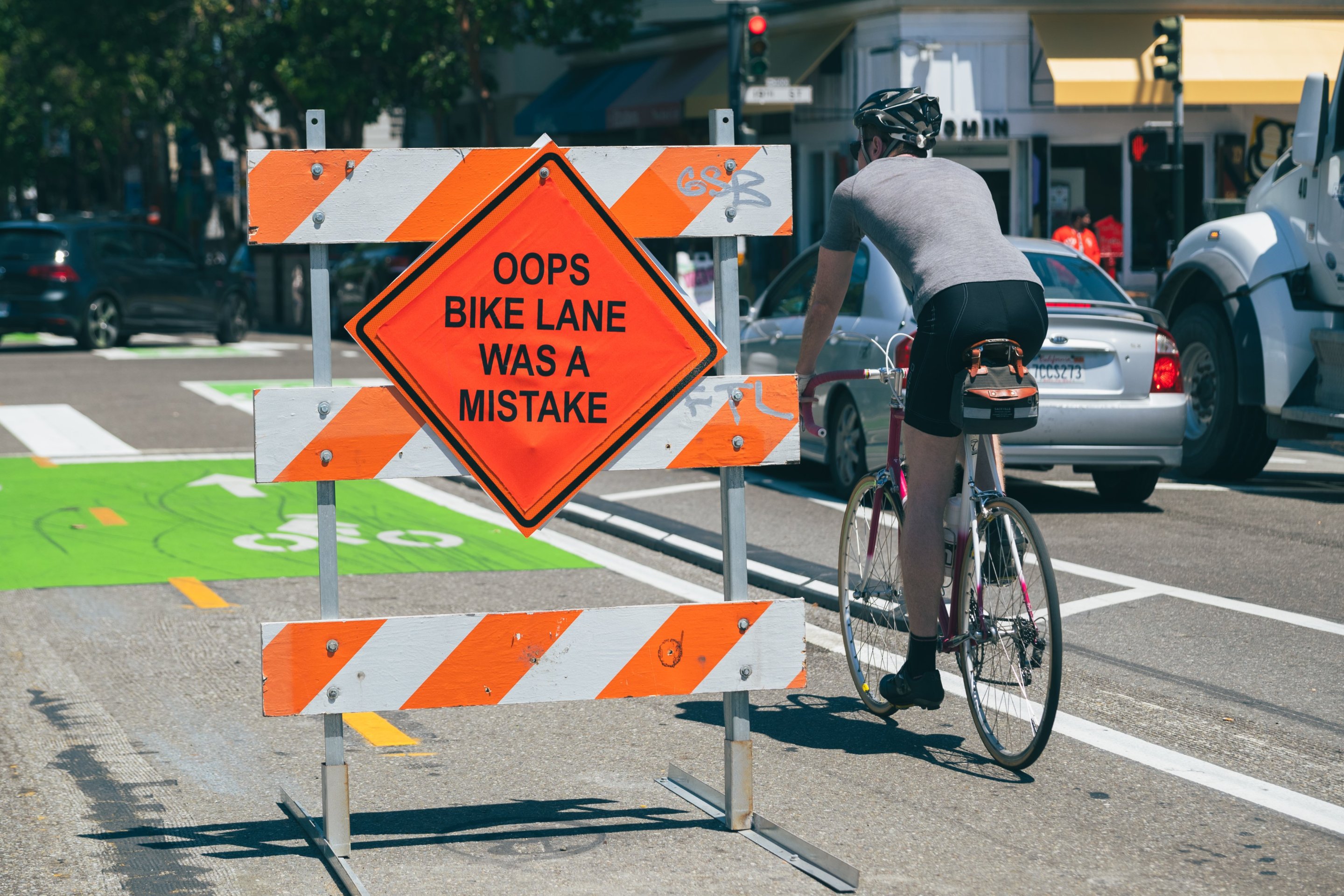Critical Mass and Car-Free Market Street
3:58 PM PST on January 31, 2020

Photo: Mona Caron/sfcriticalmass.org, from 2012
This evening is the last Friday of the month. That means it's time for a Critical Mass protest ride on the streets of San Francisco.
How many will ride tonight as part of San Francisco's 28-year-old pro-bike movement? That's unclear. Regardless, it will be the first time the ride will sail down a Market Street freed of private cars.
At Wednesday's ribbon-cutting event for a car-free Market Street, Streetsblog heard someone in the crowd gripe that none of the politicians even mentioned Critical Mass, a movement known for taking over streets. Their monthly rides, part of a pioneering effort to fight for streets that accommodate all users, were also seen as exacerbating car traffic jams and infuriating motorists.
However, "Critical Mass was the key to launching all this stuff," Chris Carlsson, one of the founders of Critical Mass, told Streetsblog via phone. "All the people riding today know that wouldn't have happened without Critical Mass. It made it possible for the tepid, wimpy bike coalition people to do their thing."
Clearly, Critical Mass remains controversial. A recent article in the Independent noted that they're listed alongside actual extremist groups by British authorities (which, Streetsblog has to say, is a silly notion). The San Francisco Bicycle Coalition, meanwhile, declined to comment for this story.
And SFMTA's own Mike Salaberry, a proud Critical Masser himself, posted some thoughts on Facebook's San Francisco Bike Ride Crew page: "Exciting times for Market St and for the momentum in general for bike projects in the city! I've heard a few folks talk about Critical Mass tonight celebrating by riding on Market. I've done CM dozens of times but it's been many years and I'm not sure how big it is or what its dynamics are these days. Anyway, I'm hoping that any CM ride today doesn't end up slowing down or stopping transit along Market St as people try to get home. Car-free Market is a great development and there is a lot of political sentiment to keep improving streets for people on bikes, so it would be a shame to stoke ill will towards cyclists by jamming up the street tonight."
"Sometimes the unauthorized, outlaw expression leads to the institutionalized version, which then leads to changes in infrastructure," opined Livable Cities' Tom Radulovich, in an interview with Streetsblog. He added that Critical Mass is to car-free streets what Parking Day is to parklets, which are now commonplace in the Bay Area and elsewhere.

"Social change always begins in art, and you can think of Critical Mass as a collective artistic expression," he said, adding that he hasn't participated in a Critical Mass ride in years. "The movement has wound down a bit, if only because, to an extent, they won" and now there are sanctioned car-free events, such as Sunday Streets, and car-free spaces, such as Octavia in Hayes Valley.
But Radulovich was careful to qualify what "winning" means. The fight for safe streets continues, just in different ways. "People Protected is on that same trajectory ... a street-theater-style protest that has been really invaluable at moving things," he said, adding that because of those protests, which involved people in yellow shirts standing along bike lanes to keep them free of scofflaw motorists, there are now networks of protected bike lanes in SoMa and elsewhere. "People Protected is the Critical Mass of today."
"Critical Mass started the trend," wrote Matt Brezina, one of the founders of the People Protected bike lane movement in San Francisco. "It opened my eyes to a community I didn't know," he added. A community of "...people that just wanted to get around their town without a car."

However, Brezina told Streetsblog that Critical Mass was more geared towards "hardcore men and women who bike" while People Protected is more mainstream, for "kids on bikes. Grandma on her bike." But each, he opined, was the right tool for its time.
But somebody had to start the movements going--and Critical Mass was first. "None of it would have happened if thousands of people hadn't seized the streets every last Friday of the month for years to live out how much better it could be," said Carlsson. "Just get out there and do it."
For some history on Critical Mass, check out former Streetsblog San Francisco editor Aaron Bialick's great piece from 2012. Or watch this 2008 Streetsfilm:
Stay in touch
Sign up for our free newsletter
More from Streetsblog San Francisco
Valencia Merchants to SFMTA: We Want Curbside Protected Bike Lanes
Valencia merchants association strengthens support for getting rid of the failed center-running bike lane and replacing it as soon as possible with curbside protected lanes
S.F. Fire Apologizes for Tweeting About Imaginary Bike Rule
There is no rule in California that says cyclists have to ride single file




